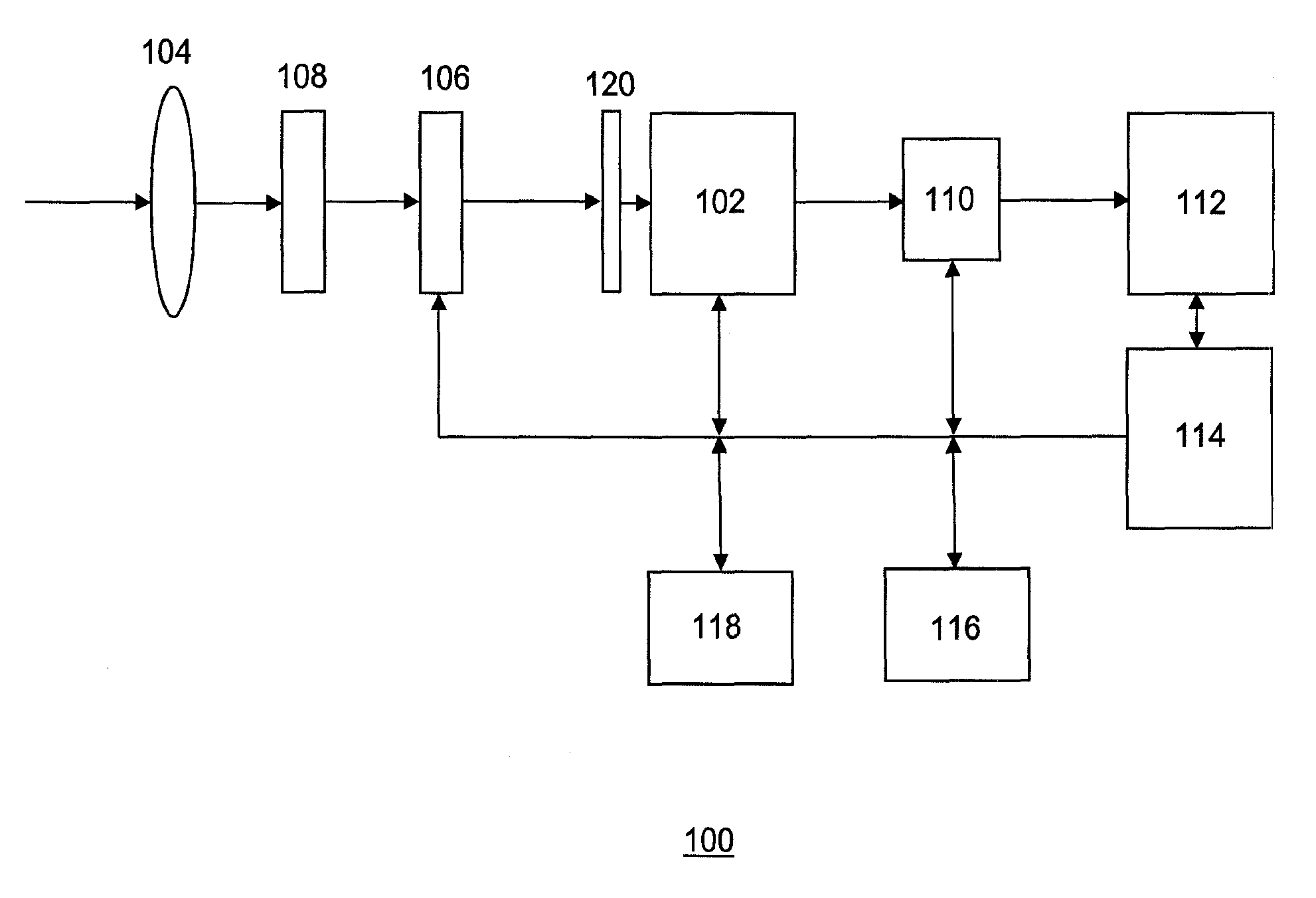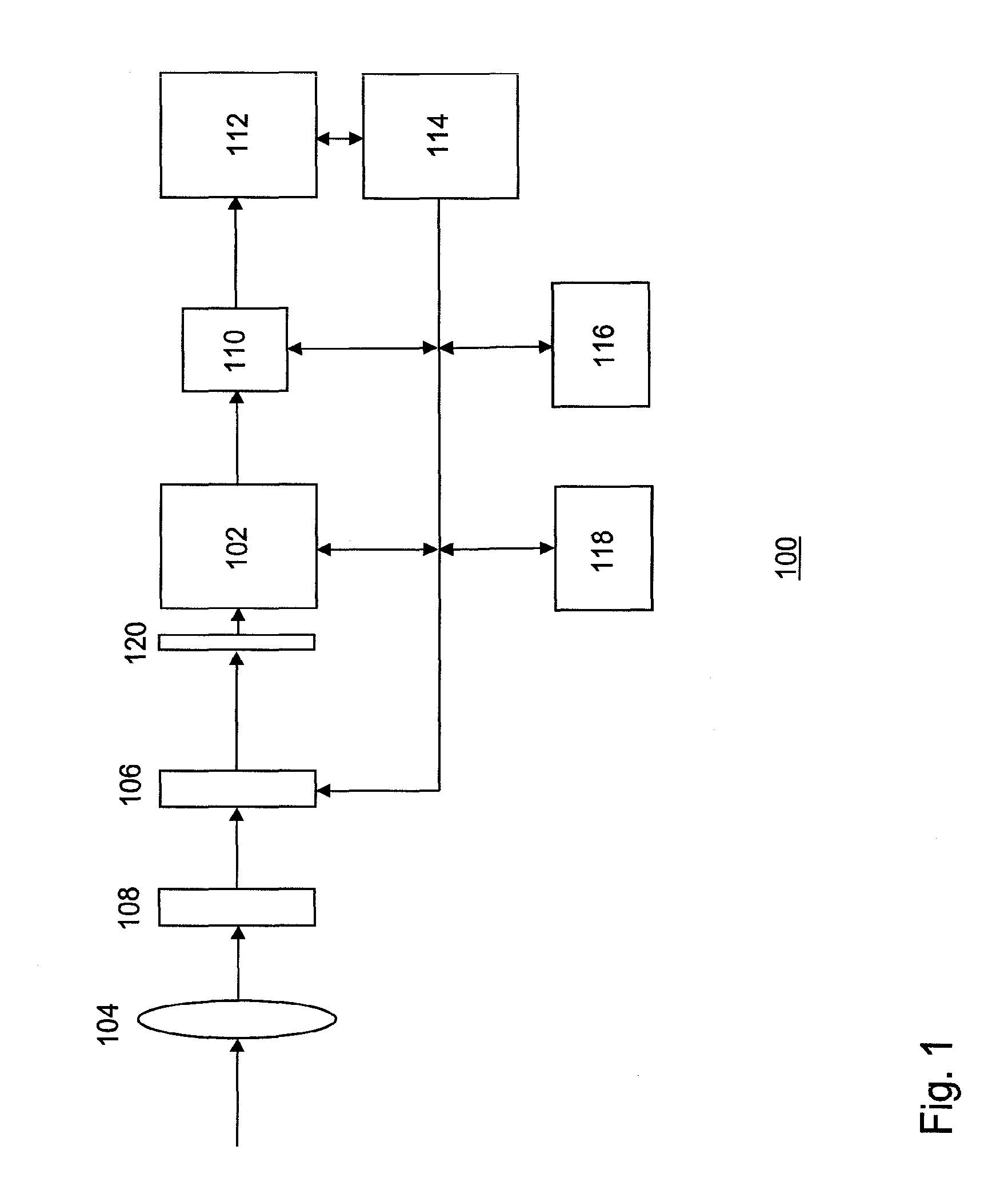Depth of field in an imaging system
a technology of depth of field and imaging system, which is applied in the field of improving the depth of field in the imaging system, can solve the problems of reducing the camera's performance in low light, reducing the shutter speed by a factor of 4 or 8 and the limitation that exists in all optical systems used in cameras today
- Summary
- Abstract
- Description
- Claims
- Application Information
AI Technical Summary
Benefits of technology
Problems solved by technology
Method used
Image
Examples
Embodiment Construction
[0026]FIG. 1 illustrates an imaging system 100 according to one embodiment of the invention. The imaging system comprises an image sensor 102, a lens system 104 for focusing objects in a scene onto the imaging plane of the image sensor, a shutter 106 and an aperture system 108 with two or more apertures for allowing radiation into the imaging system. The imaging system may be part of a digital camera or integrated in a mobile phone, a webcam and other multimedia devices requiring image capturing functionality.
[0027]The shutter may be a mechanical shutter or, alternatively, the shutter may be an electronic shutter integrated in the image sensor. The image sensor comprises rows and columns of photosensitive sites (pixels) forming a two dimensional pixel array. The image sensor may be an CMOS (Complimentary Metal Oxide Semiconductor) active pixel sensor or an CCD (Charge Coupled Device) image sensor.
[0028]When the radiation is projected by the lens system onto the image sensor, each pi...
PUM
 Login to View More
Login to View More Abstract
Description
Claims
Application Information
 Login to View More
Login to View More - R&D
- Intellectual Property
- Life Sciences
- Materials
- Tech Scout
- Unparalleled Data Quality
- Higher Quality Content
- 60% Fewer Hallucinations
Browse by: Latest US Patents, China's latest patents, Technical Efficacy Thesaurus, Application Domain, Technology Topic, Popular Technical Reports.
© 2025 PatSnap. All rights reserved.Legal|Privacy policy|Modern Slavery Act Transparency Statement|Sitemap|About US| Contact US: help@patsnap.com



